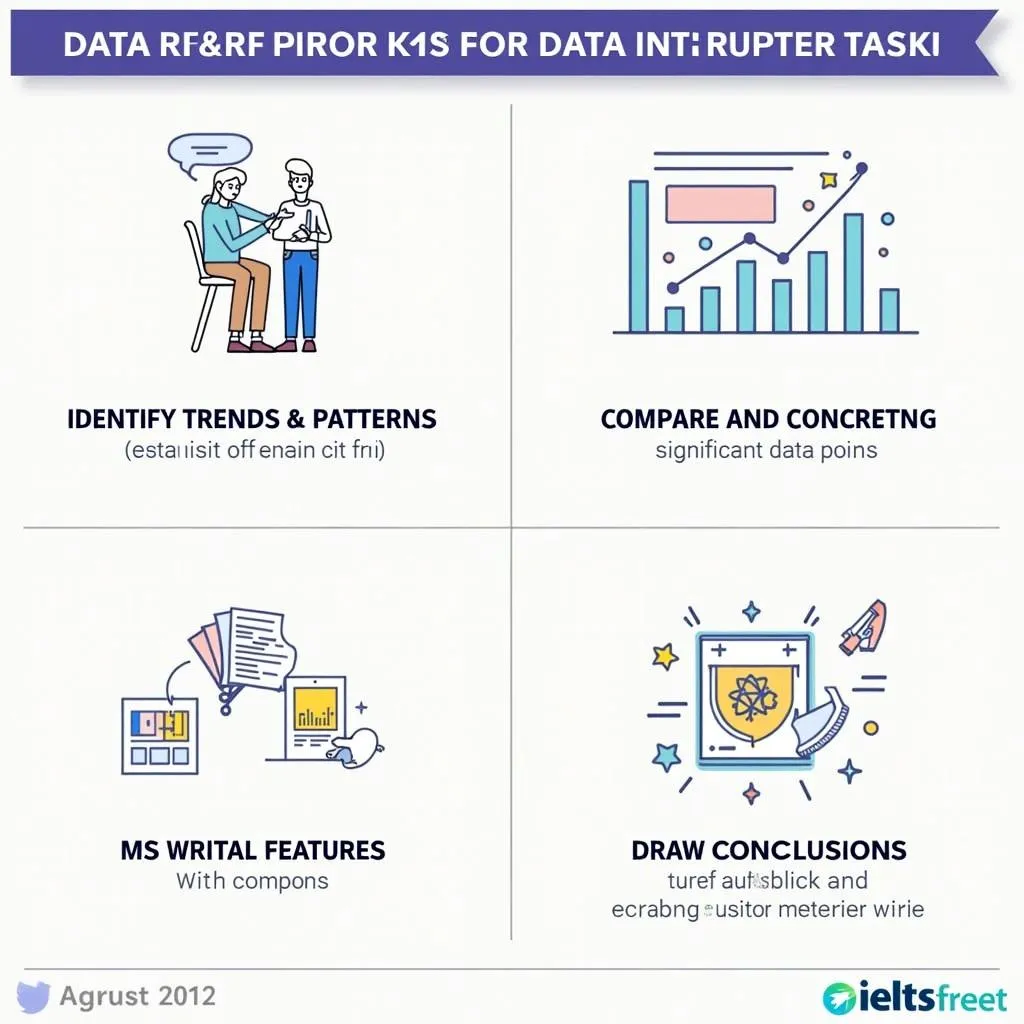Understanding the Importance of Data Interpretation in IELTS Writing Task 1
Data interpretation is a crucial skill for success in IELTS Writing Task 1. This task requires candidates to analyze and describe visual information, such as graphs, charts, tables, or diagrams. Mastering data interpretation techniques can significantly improve your score and help you convey information accurately and efficiently.
Key Components of Data Interpretation
- Identifying trends and patterns
- Comparing and contrasting data points
- Recognizing significant features
- Drawing conclusions from the presented information

Essential Tips for Effective Data Interpretation
1. Understand the Big Picture
Before diving into specific details, take a moment to grasp the overall message of the visual information. Ask yourself:
- What is the main topic or theme?
- What time period does the data cover?
- Are there any obvious trends or patterns?
Understanding the big picture will help you structure your response and identify the most important information to include in your writing.
2. Identify Key Features and Trends
Look for significant aspects of the data, such as:
- Highest and lowest values
- Notable increases or decreases
- Turning points or fluctuations
- Similarities or differences between categories
Focus on describing these key features using appropriate language and specific data points to support your observations.
3. Use Appropriate Language for Data Description
Employ a variety of vocabulary and structures to describe the data accurately:
- Trend vocabulary: increase, decrease, fluctuate, remain stable
- Comparison language: higher than, lower than, similar to, in contrast with
- Quantifiers: significant, slight, dramatic, gradual
- Specific figures: exact numbers, percentages, or fractions when relevant
Example:
“The graph shows a significant increase in sales from January to March, followed by a slight decline in April. In contrast, production costs remained relatively stable throughout the period.”
4. Group Related Information
Organize your writing by grouping related data points or trends. This approach helps create a coherent and logical response. Consider:
- Similarities in trends or patterns
- Related categories or time periods
- Contrasting information that highlights important differences
5. Use Clear Paragraphing and Structure
Organize your response with a clear structure:
- Introduction: Summarize the main features of the visual information
- Body paragraphs: Describe key trends, comparisons, or contrasts
- Conclusion: Summarize the main points or provide an overall assessment (if appropriate)
6. Practice Time Management
IELTS Writing Task 1 requires you to complete your response in 20 minutes. To manage your time effectively:
- Spend 2-3 minutes analyzing the visual information
- Use 12-15 minutes for writing your response
- Reserve 2-3 minutes for reviewing and editing your work
Regular practice with timed exercises will help you improve your speed and efficiency in data interpretation and description.
7. Avoid Personal Opinions and Speculation
Stick to the facts presented in the visual information. Avoid:
- Making predictions about future trends
- Offering explanations for the data unless explicitly asked
- Inserting personal opinions or experiences
Focus on objectively describing what you see in the data.
Common Pitfalls to Avoid
- Overcomplicating your language: Use clear, concise expressions to describe data.
- Neglecting to use specific figures: Include relevant numbers to support your observations.
- Describing every single data point: Focus on key features and overall trends.
- Misinterpreting scales or units: Pay close attention to the information provided in labels and legends.
Next Steps for Improvement
To enhance your data interpretation skills for IELTS Writing Task 1:
- Practice regularly with a variety of visual information types (graphs, charts, tables, diagrams)
- Time yourself to improve speed and efficiency
- Review sample answers and examiner comments to understand assessment criteria
- Seek feedback from teachers or study partners on your practice responses
- Build a robust vocabulary for describing trends, comparisons, and data features
By following these tips and dedicating time to practice, you can significantly improve your performance in IELTS Writing Task 1 data interpretation. Remember, the key to success lies in clear, accurate, and well-organized descriptions of the visual information presented.